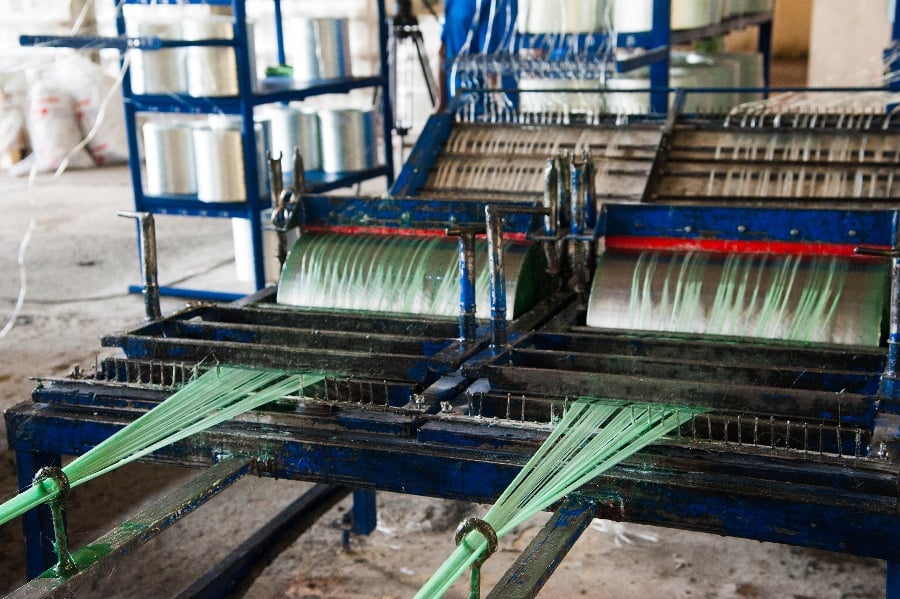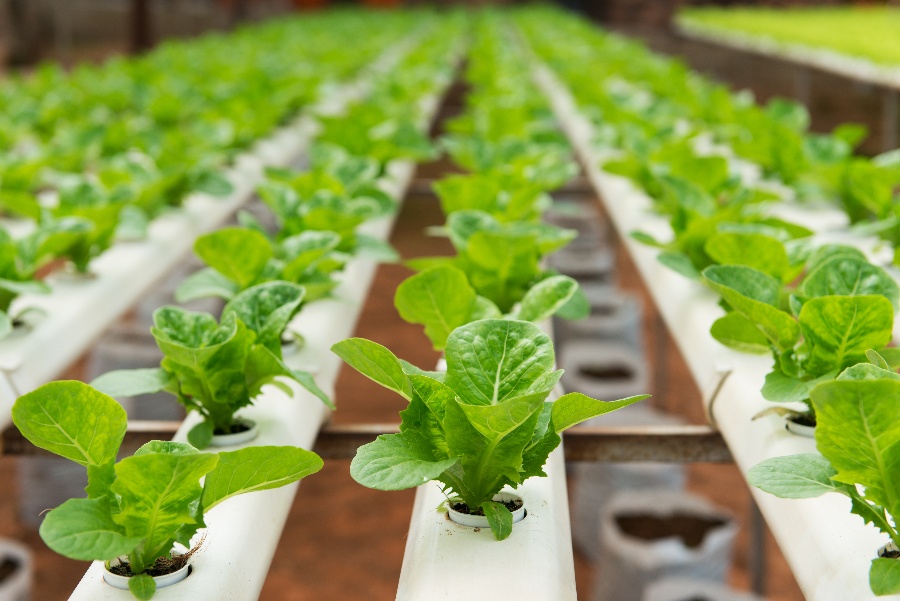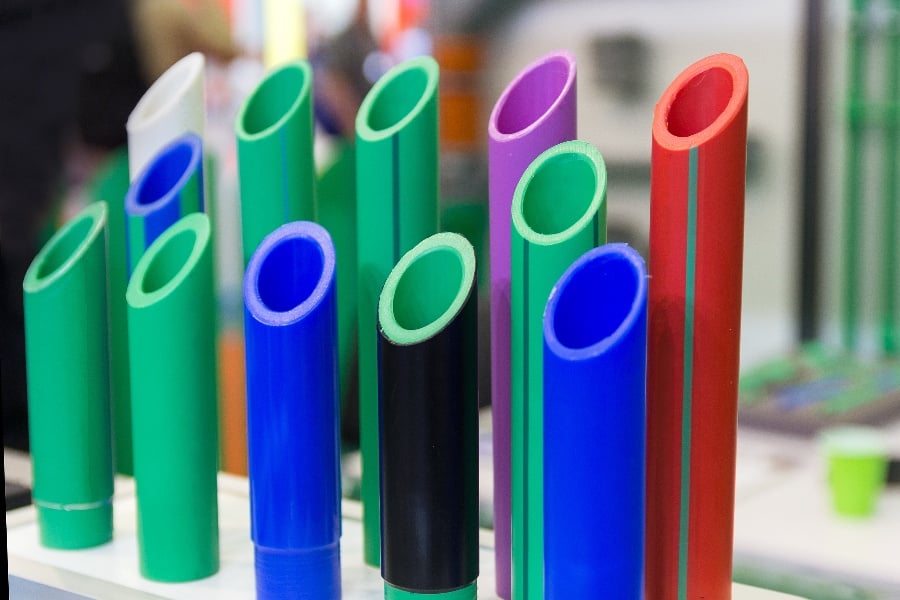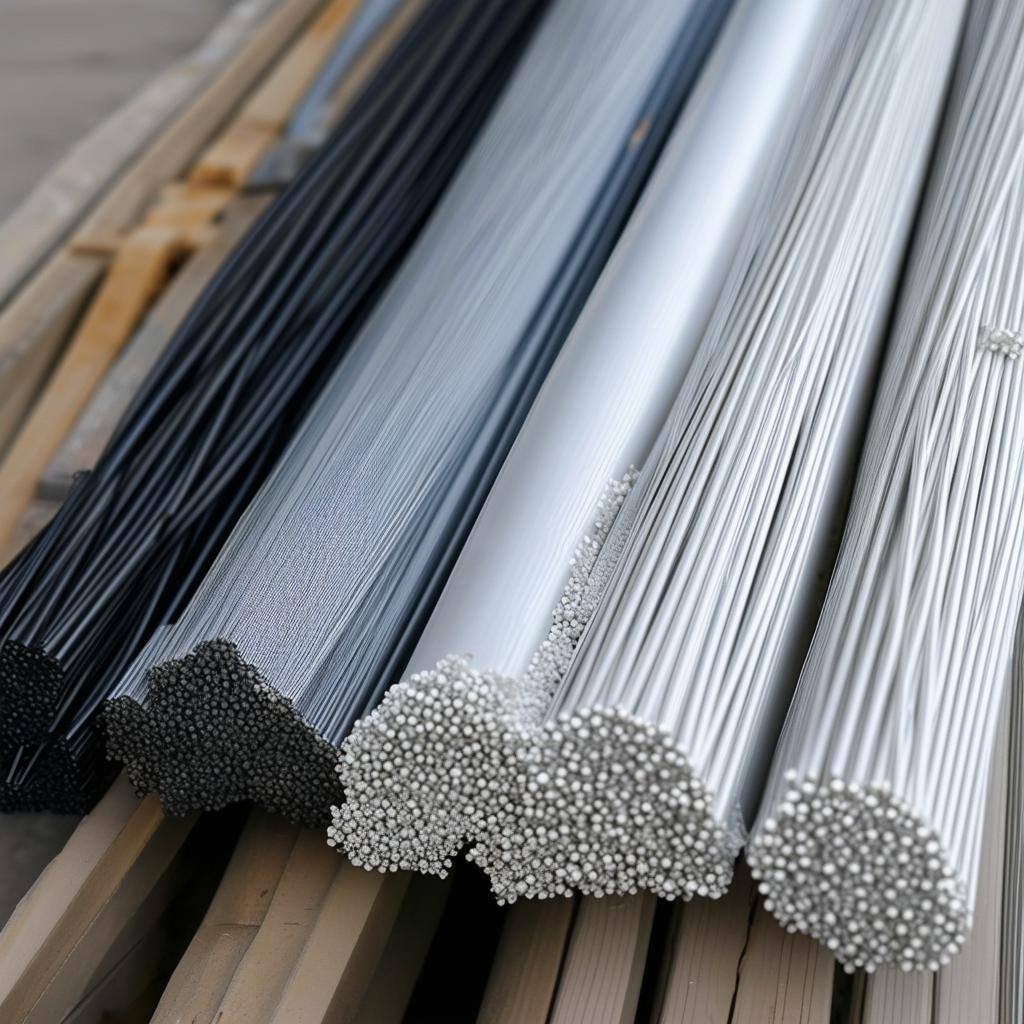
Pultruded fiberglass has become a common feature of the modern world, used heavily in the construction, utilities, infrastructure, and consumer goods industries.
Two key ingredients make up this composite material: glass fiber and some type of resin, for instance polyester or vinyl ester.
In some cases, manufacturers may choose to replace the glass fiber with a comparable material known as carbon fiber.
This exchange gives the resulting composite slightly different properties that may make it better suited for particular applications.
If you would like to learn more about these two pultruded products, keep reading. This article breaks down some key differences between pultruded fiberglass and pultruded carbon fiber.
A Quick Overview of the Pultrusion Process
Before delving into the differences between fiberglass and carbon fiber, it will be helpful to review the process by which both materials are manufactured.
Pultrusion involves pulling a reinforcing material — here, either glass or carbon fiber — through a special machine known as a resin impregnator.
As the resin is pulled from one end of the machine to the other, each fiber is coated in a specially chosen resin. The wet fibers then pass through preforming guides that give the material the desired shape.
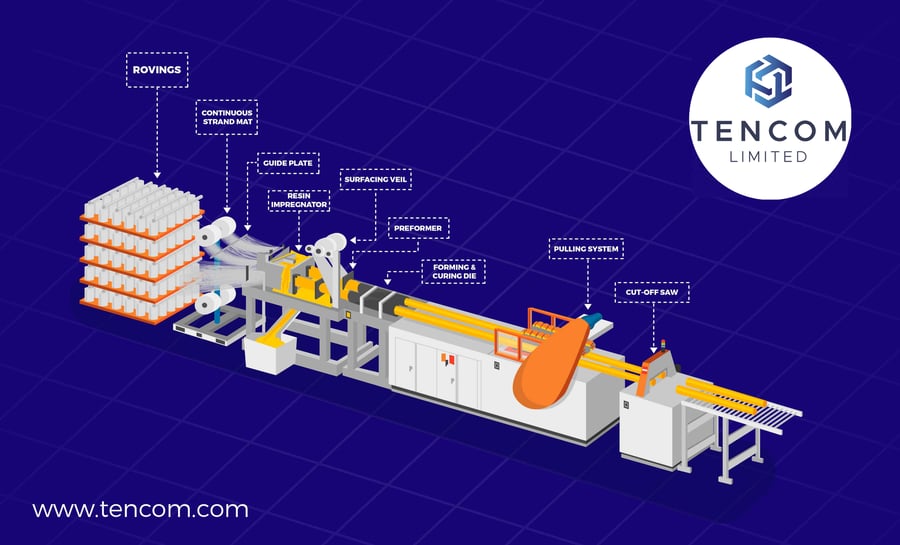
Finally, the fibers enter a heated die, whose carefully monitored temperature causes the resin to cure into a hardened form.
Fiberglass and Carbon Fiber
Fiberglass begins its existence as inorganic silica sand, which along with limestone and soda ash is heated to an extreme temperature — 2500 degrees Fahrenheit, to be precise.
At this temperature the sand takes on a molten form. Special forming equipment then draws the molten glass out into incredible thin strands.
Carbon fiber, by contrast, starts out as organic polymers — in other words, long molecular strings bound together with carbon atoms.
These polymers are, in most cases, turned into carbon fiber through the polyacrylonitrile (PAN) process. Polyacrylonitrile is the name of the particular polymer used to create the carbon fiber.
The multi-step PAN process involves spinning the polyacrylonitrile into fibers, making chemical alterations to stabilize it, then carbonizing and treating the surface of the fibers.
The result is a fiber even thinner than fiberglass, but which can be introduced to the pultrusion process in exactly the same way as fiberglass.
Fiberglass Vs Pultruded Carbon Fiber
Now that you have a basic idea about the origins of fiberglass and carbon fiber, you are probably wondering what kind of differences they display when used as a pultrusion material.
Here are four of the most significant points of comparison to be aware of:
Weight and Strength
Because of the relatively thinner diameters of its strands, carbon fiber weighs approximately half as much as fiberglass. However, this difference may not be that significant when comparing equivalent pieces of pultruded fiberglass and pultruded carbon fiber, since the resin adds a significant amount of bulk, generally outweighing the fibers themselves in both cases.
Carbon fiber also exhibits a greater fiber strength than fiberglass. Yet as with the weight difference, this strength difference is not necessarily a significant factor on its own.
For instance, carbon fiber has a fiber strength of 4127, while the type of fiberglass known as E Glass has a fiber strength of 3450 — roughly 16 percent less.
Yet the differences between the two materials come into focus when you consider these factors in tandem. The strength-to-weight ratio expresses how strong each material is relative to its weight.
E Glass has a strength-to-weight of 564, while carbon fiber has a strength-to-weight of 1013 — nearly twice as great.
This high strength relative to weight means that manufacturers need to use far less carbon fiber when pultruding a given product. As a result, pultruded carbon fiber products can often get away with significantly thinner cross-sections.
This is where the real weight reduction comes into play, since less resin will need to be used.
Rigidity and Toughness
In addition to being stronger than fiberglass, carbon fiber is also stiffer. This extra rigidity can prove highly useful, allowing manufacturers to meet far more precise stiffness needs.
For instance, the silicon tracker modules inside of CERN's Large Hadron Collider required a degree of stiffness that only carbon fiber pultrusions could supply.
However, this increased rigidity does not necessarily mean that carbon fiber makes a better choice for all applications.
Fiberglass with its relatively supple nature is a far better choice for applications that entail high flex patterns. The small flex window of carbon fiber may preclude its use for such applications.
Just as with the relationship between weight and strength, the rigidity of a pultrusion material affects its long-term toughness.
Fiberglass is generally considered tougher than carbon fiber, since its more flexibility nature allows it to withstand stress and physical abuse more easily.
Carbon fiber, despite being stronger, usually has a lower breaking point, making it more susceptible to damage over time.
Thermal Expansion
Compared to materials like steel and aluminum, fiberglass has a relatively small coefficient of thermal expansion — meaning it won't get significantly larger as the result of temperature changes.
That said, if exposed to extreme enough variations — or if tolerances are especially tight — then fiberglass pultrusion may not make a suitable choice.
Carbon fiber has a remarkable property in this regard: it actually has a negative coefficient of thermal expansion. As a result, carbon fiber expands as temperatures go down.
This tendency effectively counterbalances the fact that the resin matrix used to bind together the fibers has a positive coefficient, essentially leading to a near-neutral overall coefficient.
Cost
The advantage in terms of cost falls clearly to the side of fiberglass. Producing long carbon fibers is far more a time-consuming and difficult process, which naturally makes carbon fiber more expensive.
Likewise, the broader range of uses for fiberglass — including non-protrusion products — helps to ensure that its price-point remains far more competitive.
Ultimately, both fiberglass and pultruded carbon fiber exhibit unique properties, and neither one is a clear winner for all applications.
Instead, you must carefully consider the needs and parameters of a given product in order to select the material best suited for your needs.
For more information about how to decide between fiberglass and pultruded carbon fiber, please contact the pros at Tencom Ltd.






